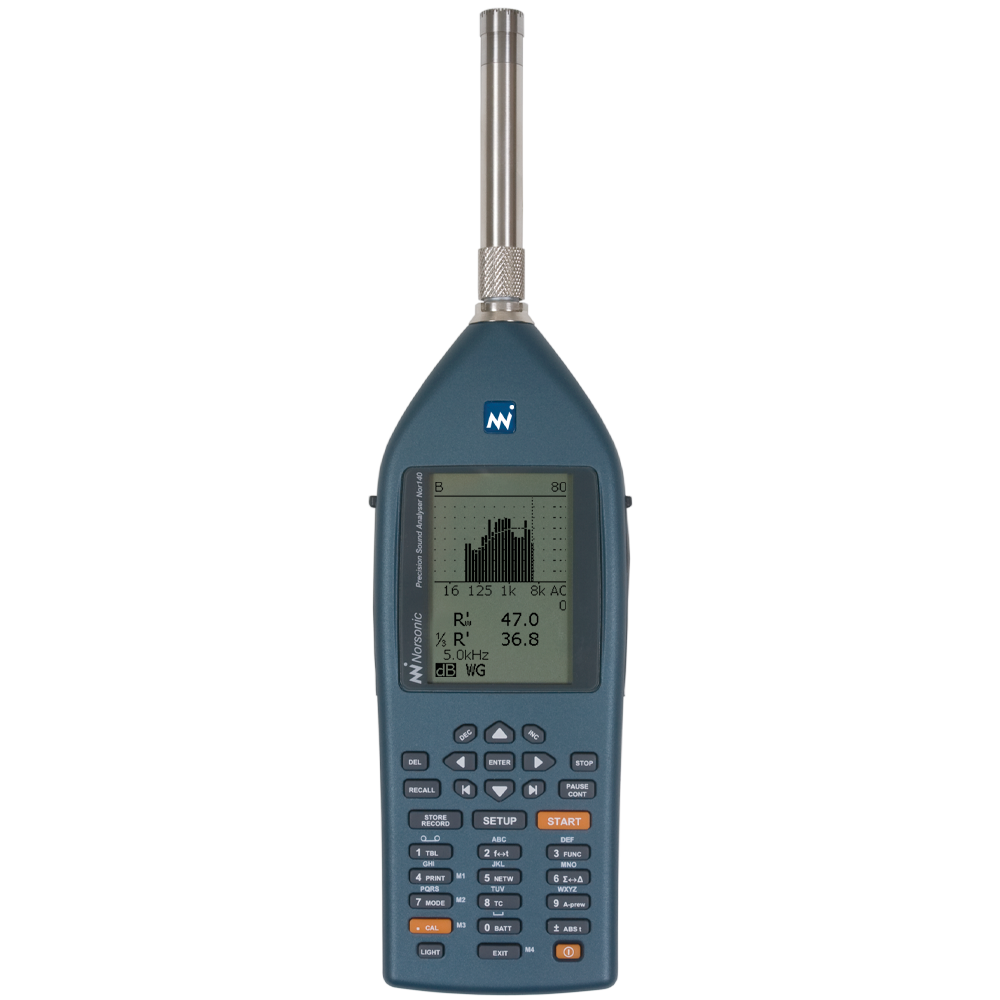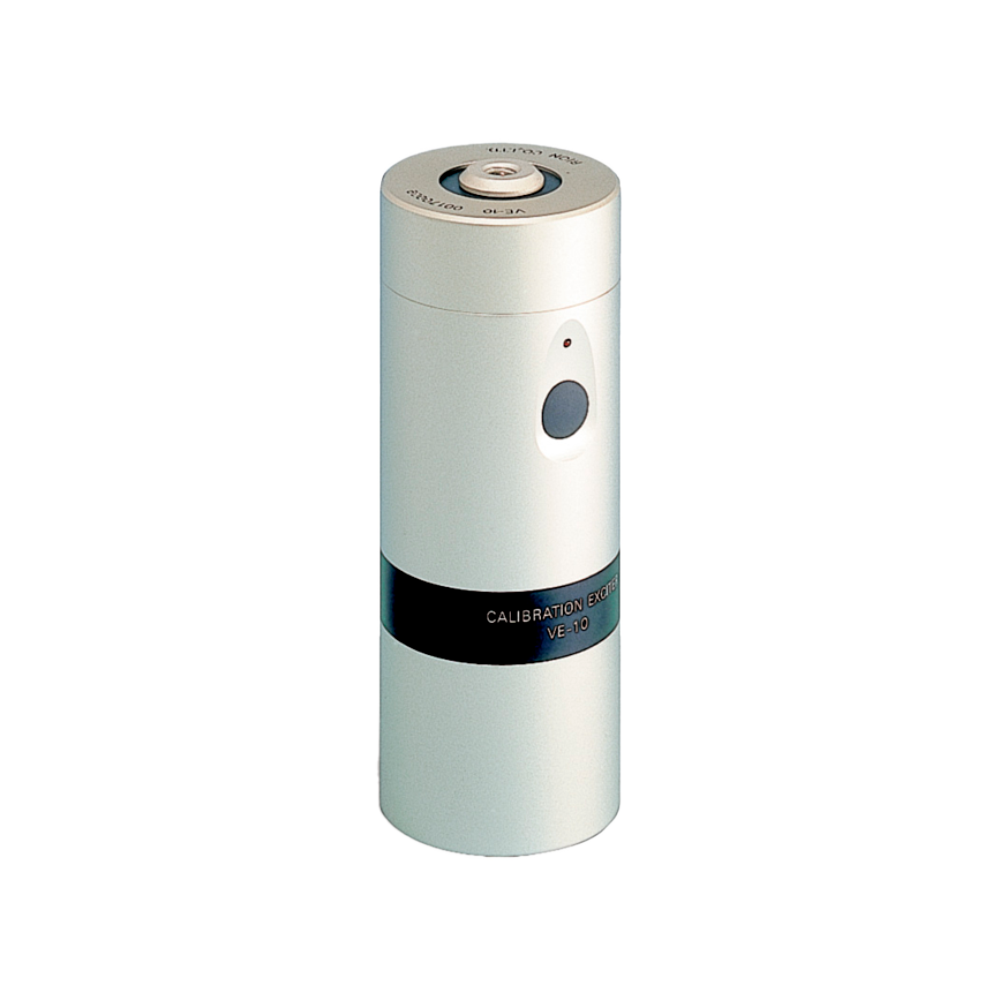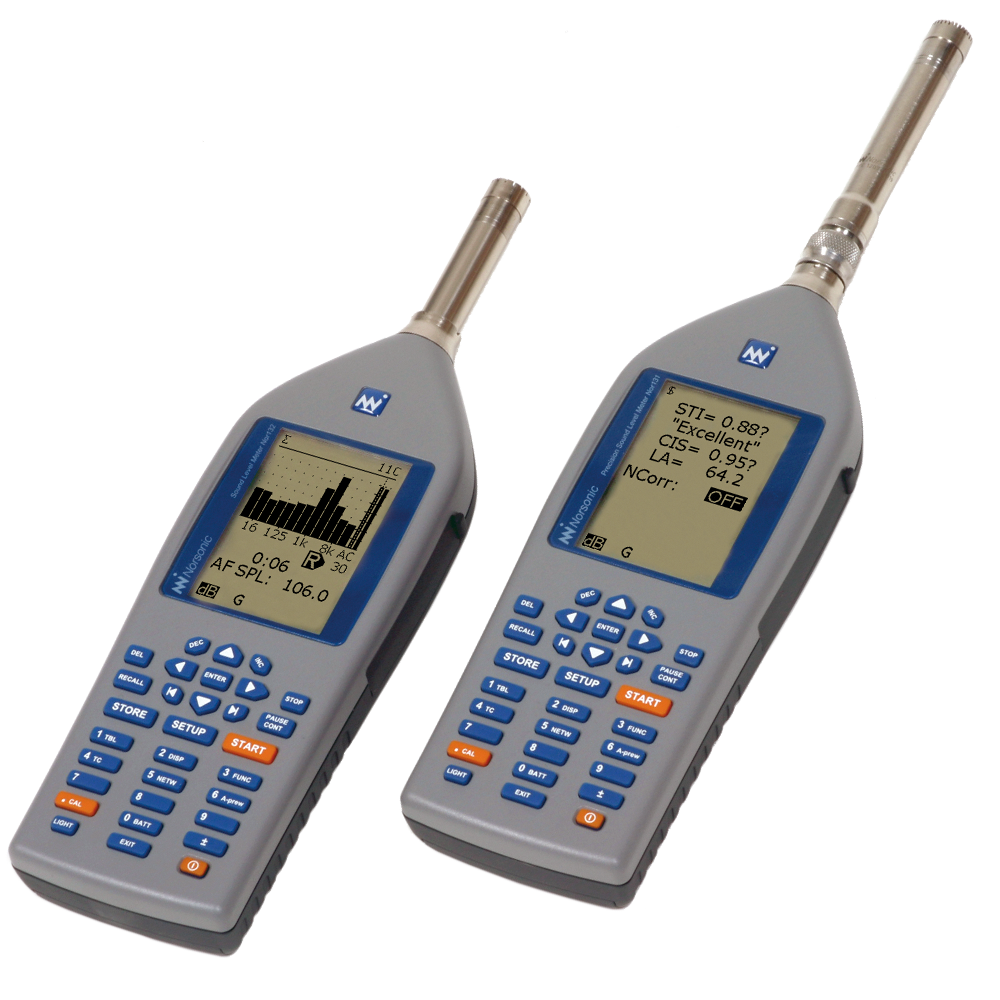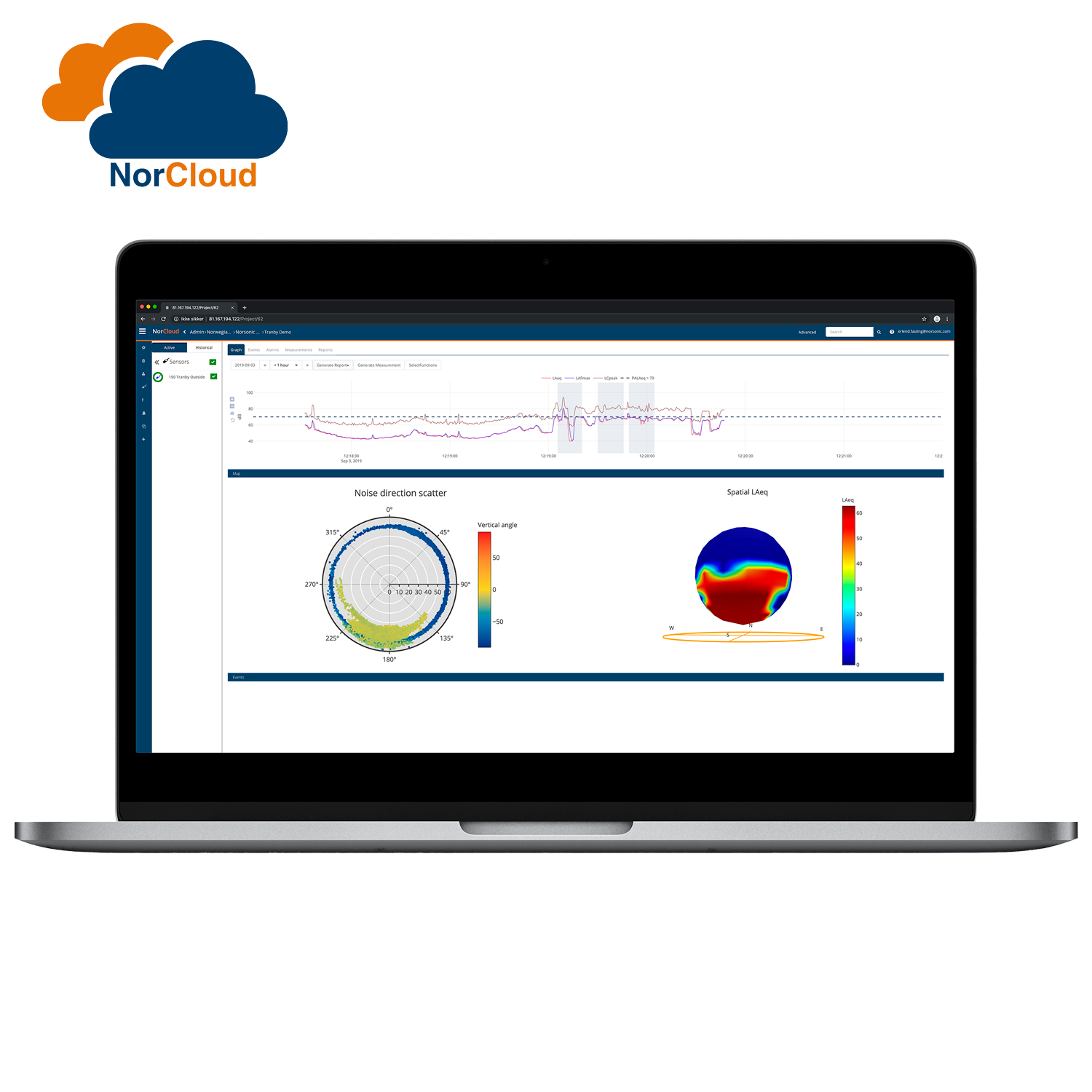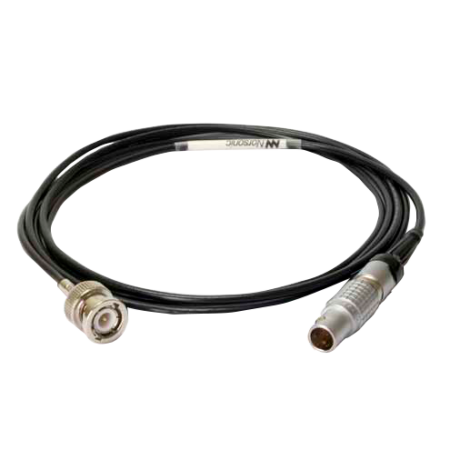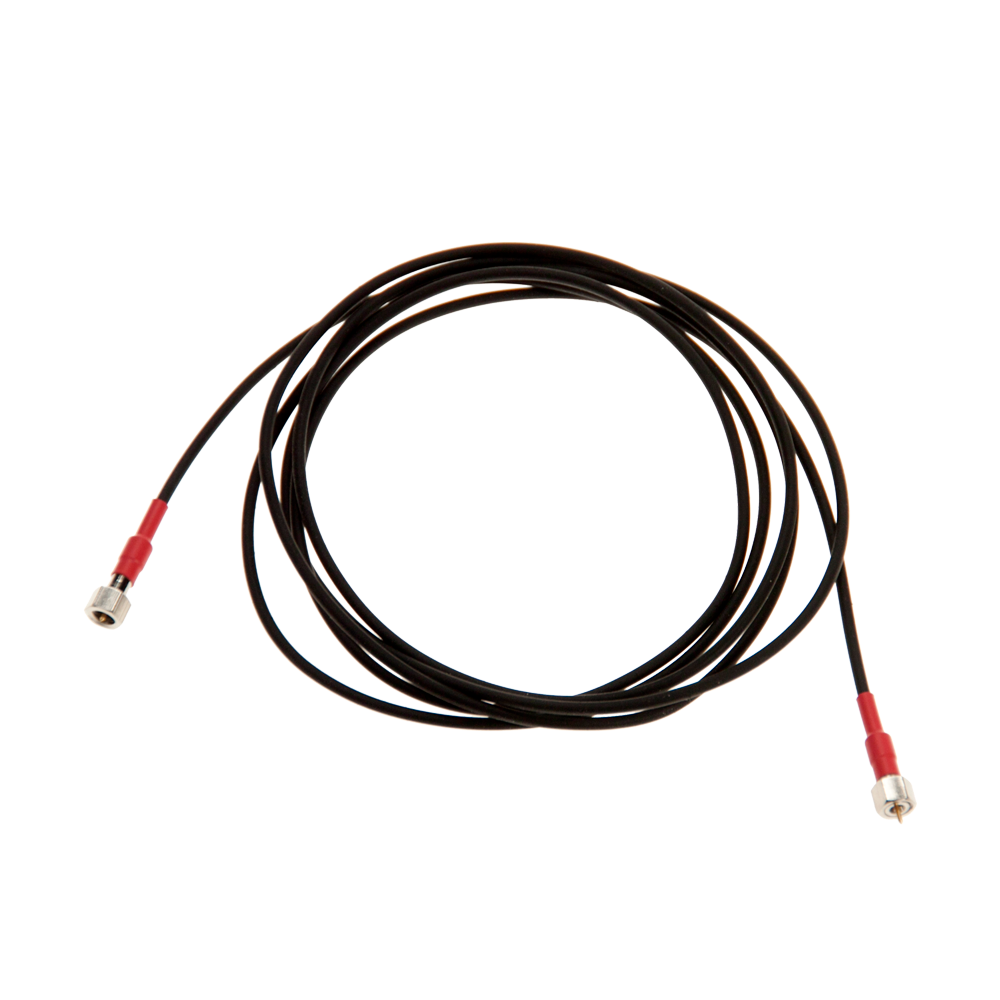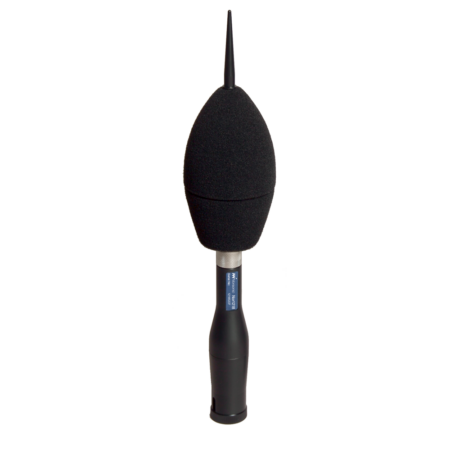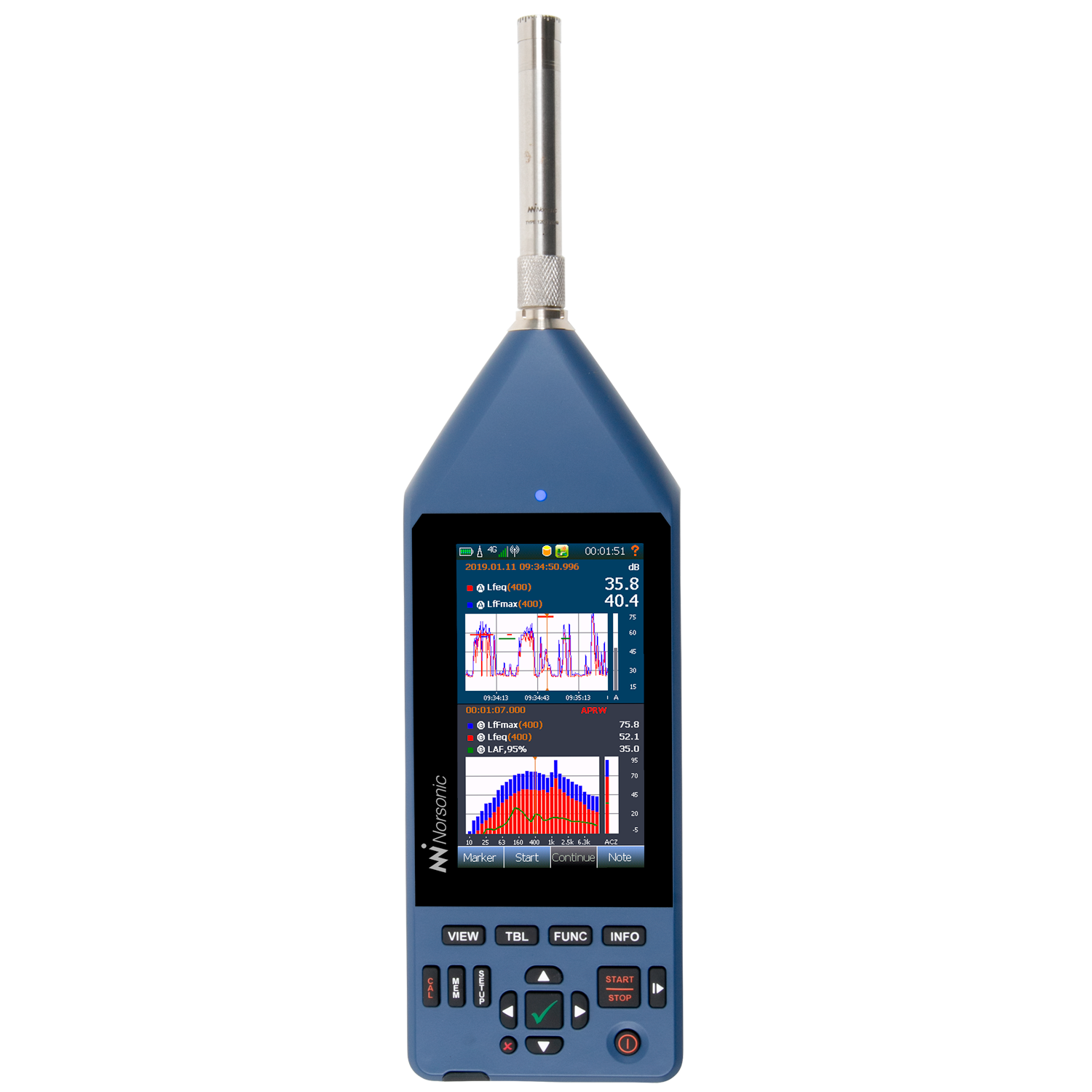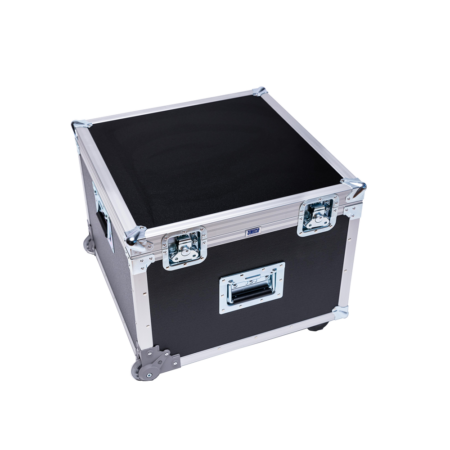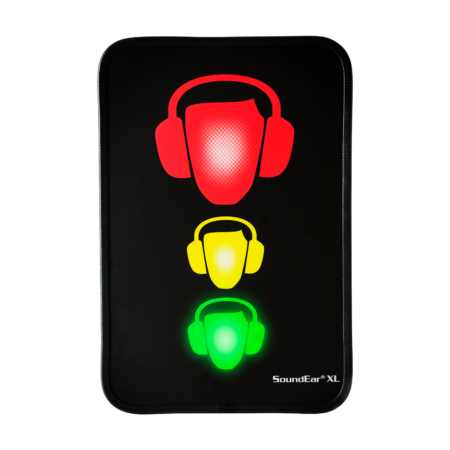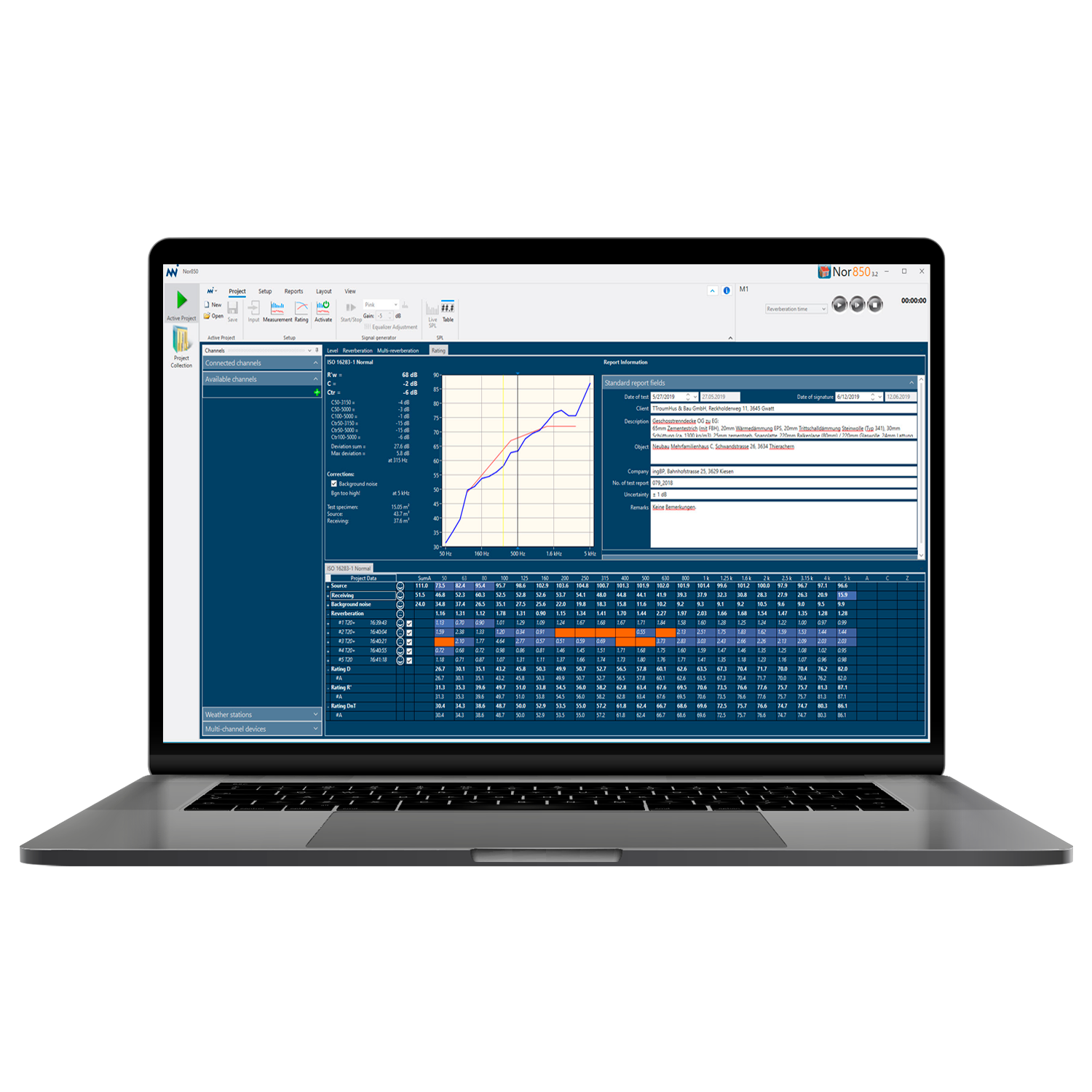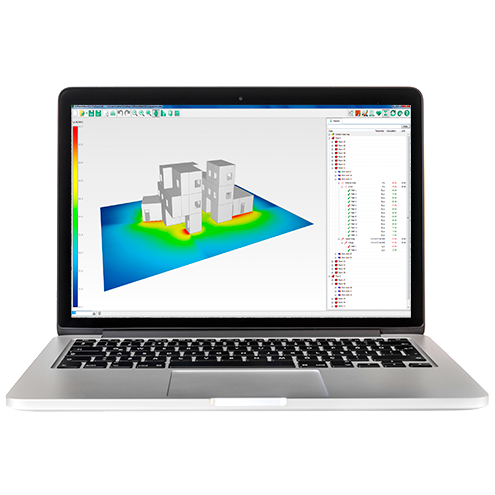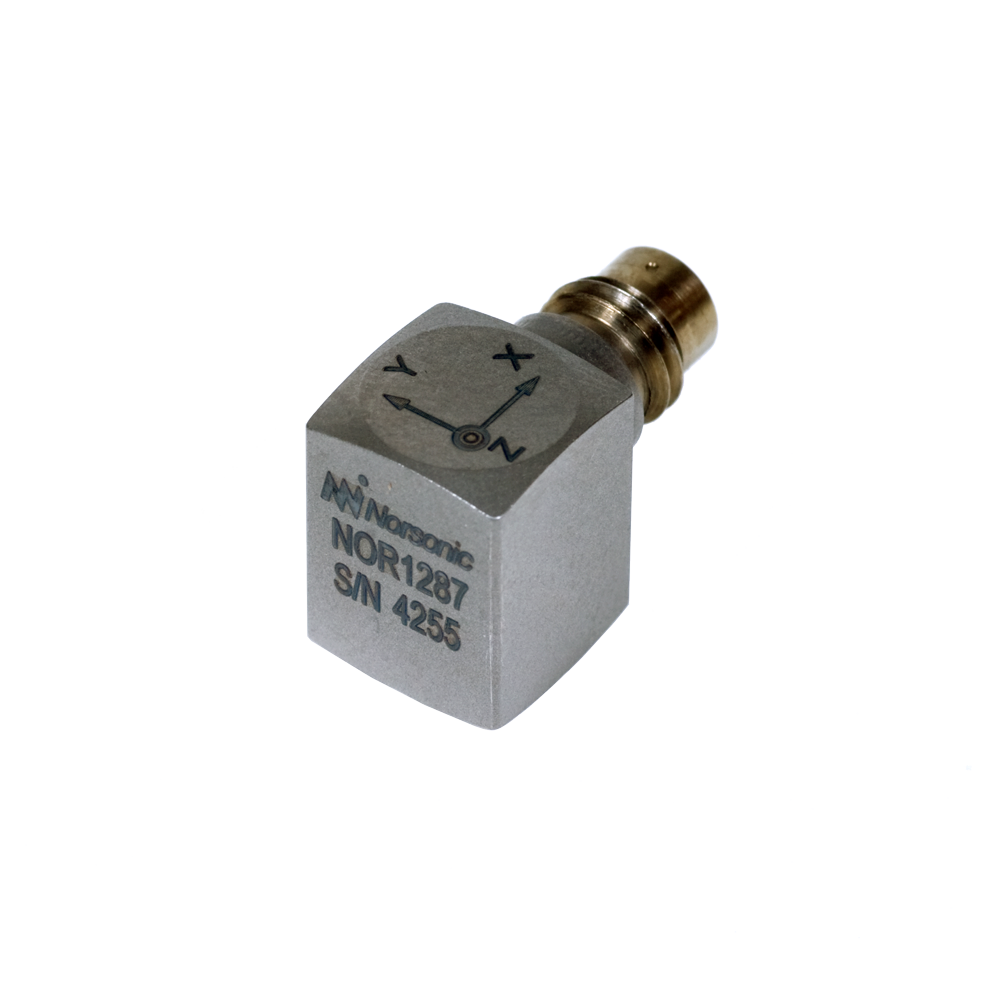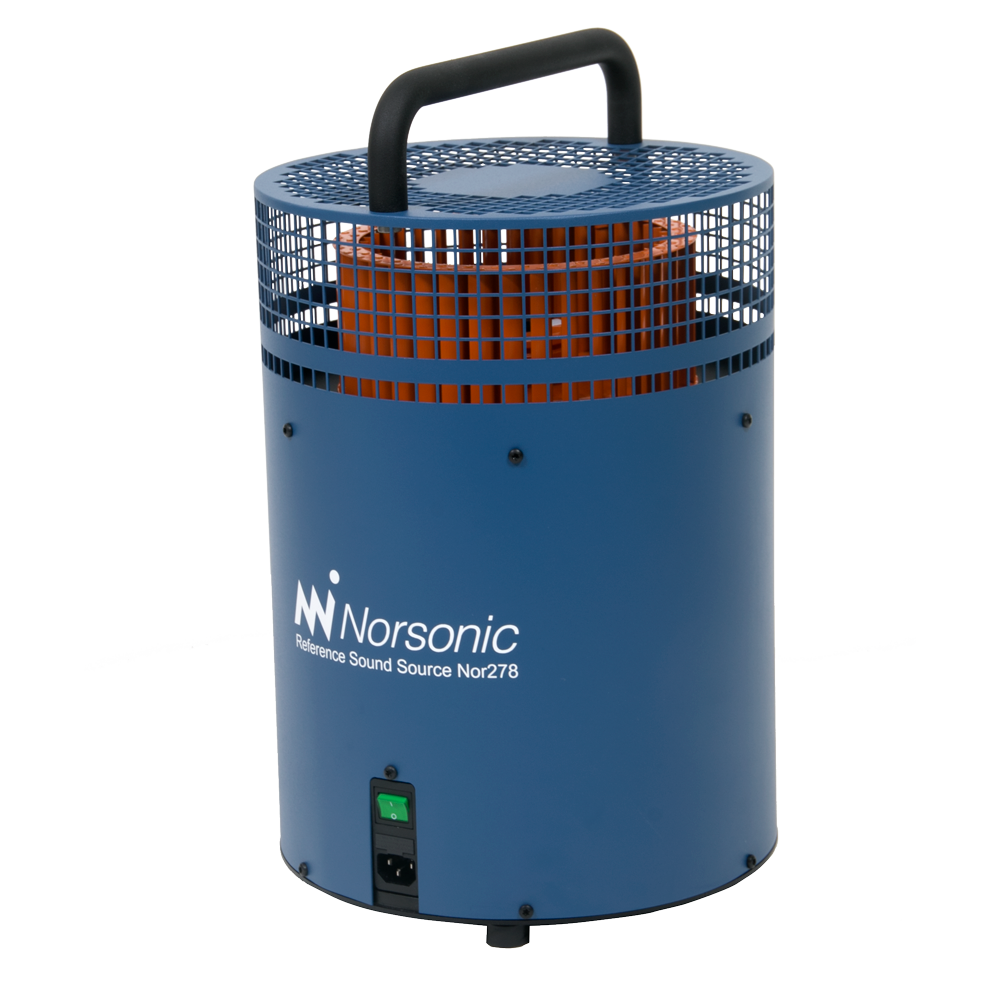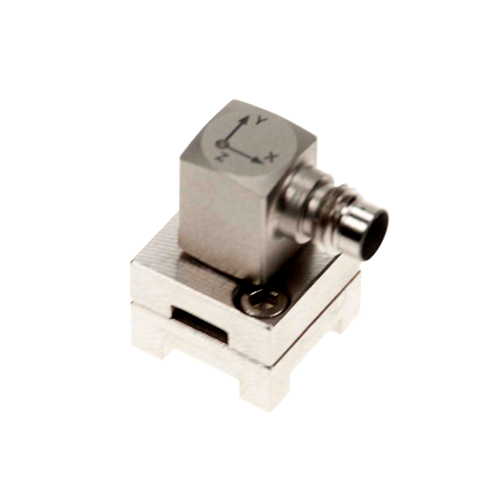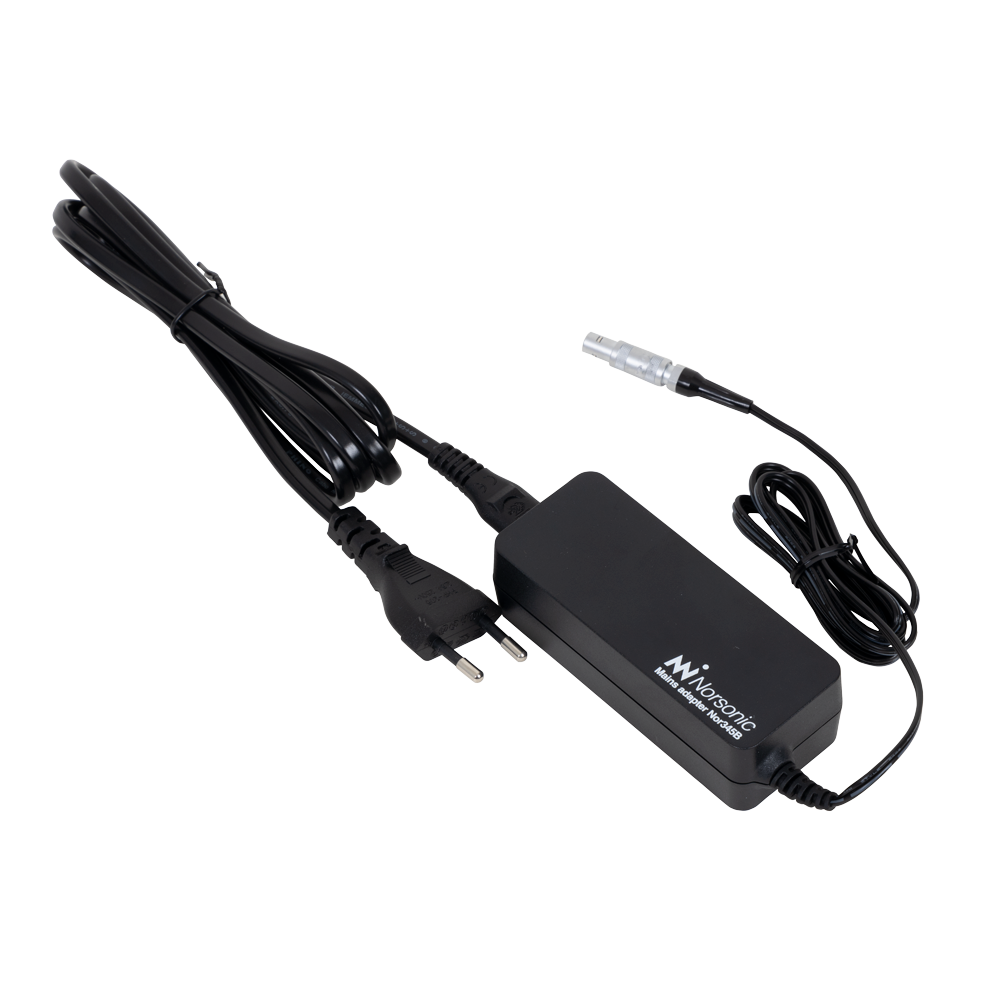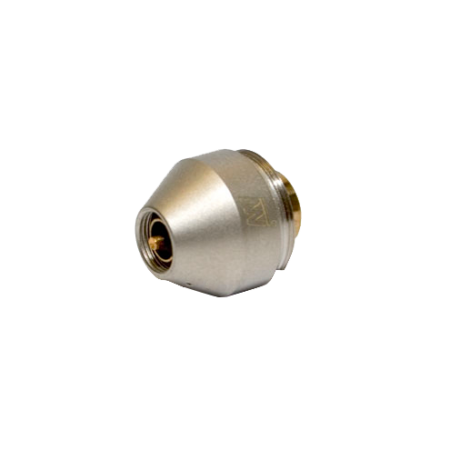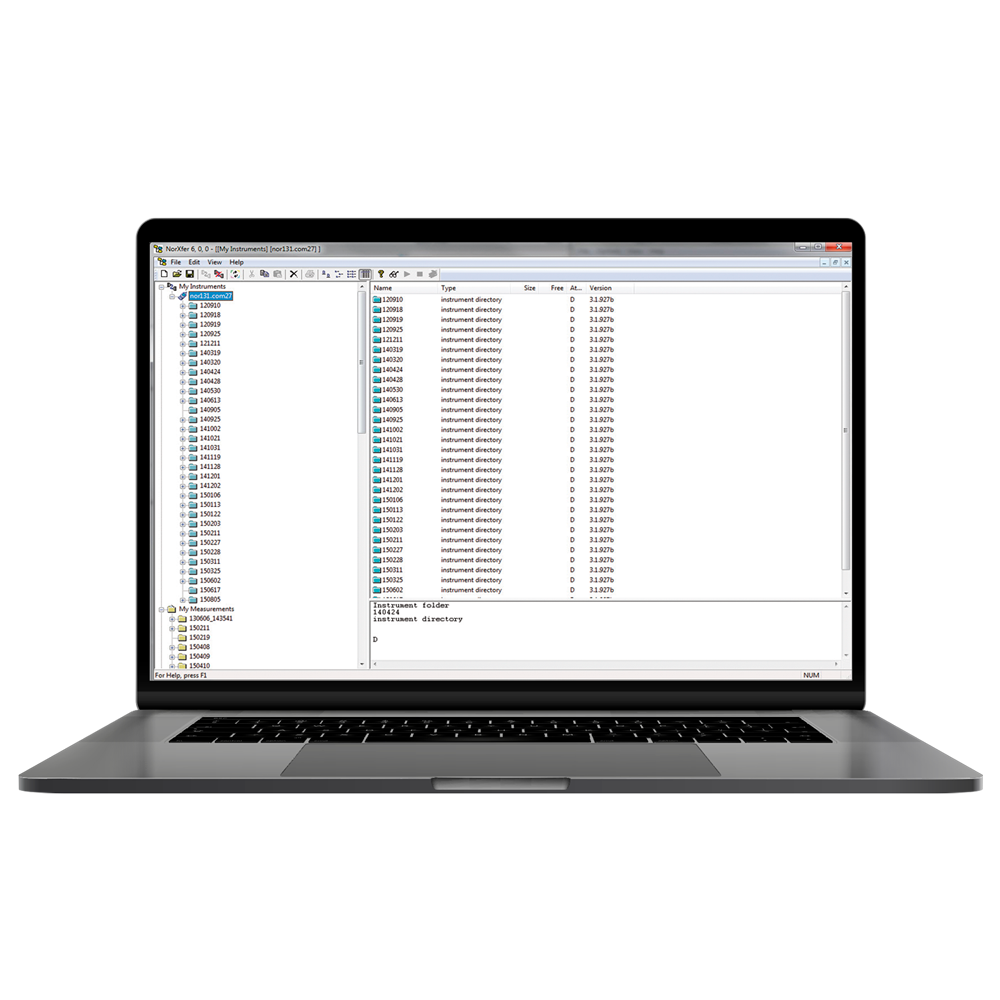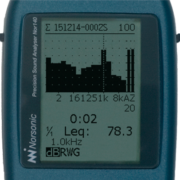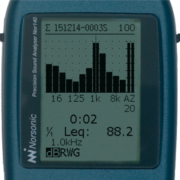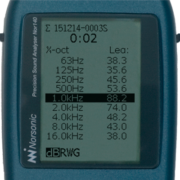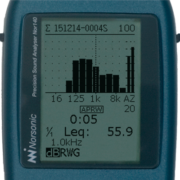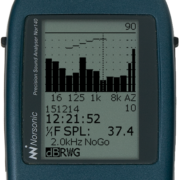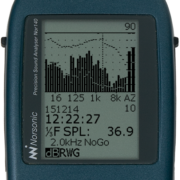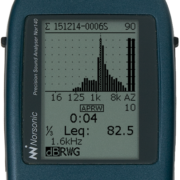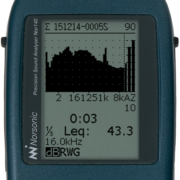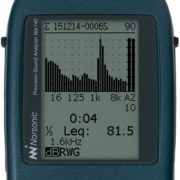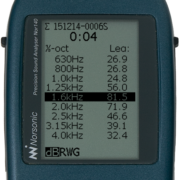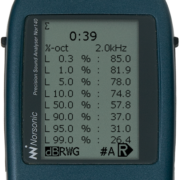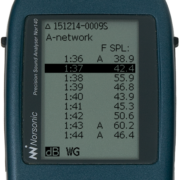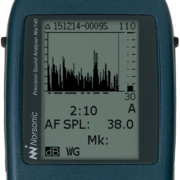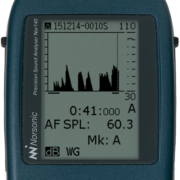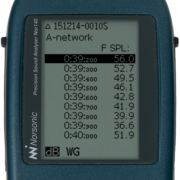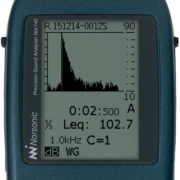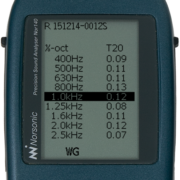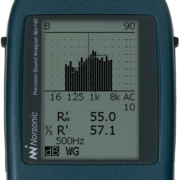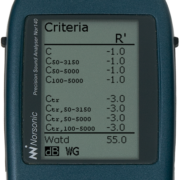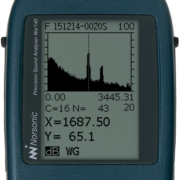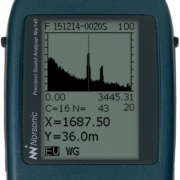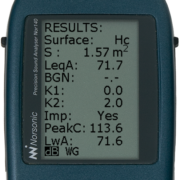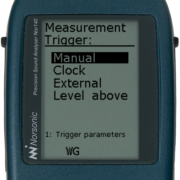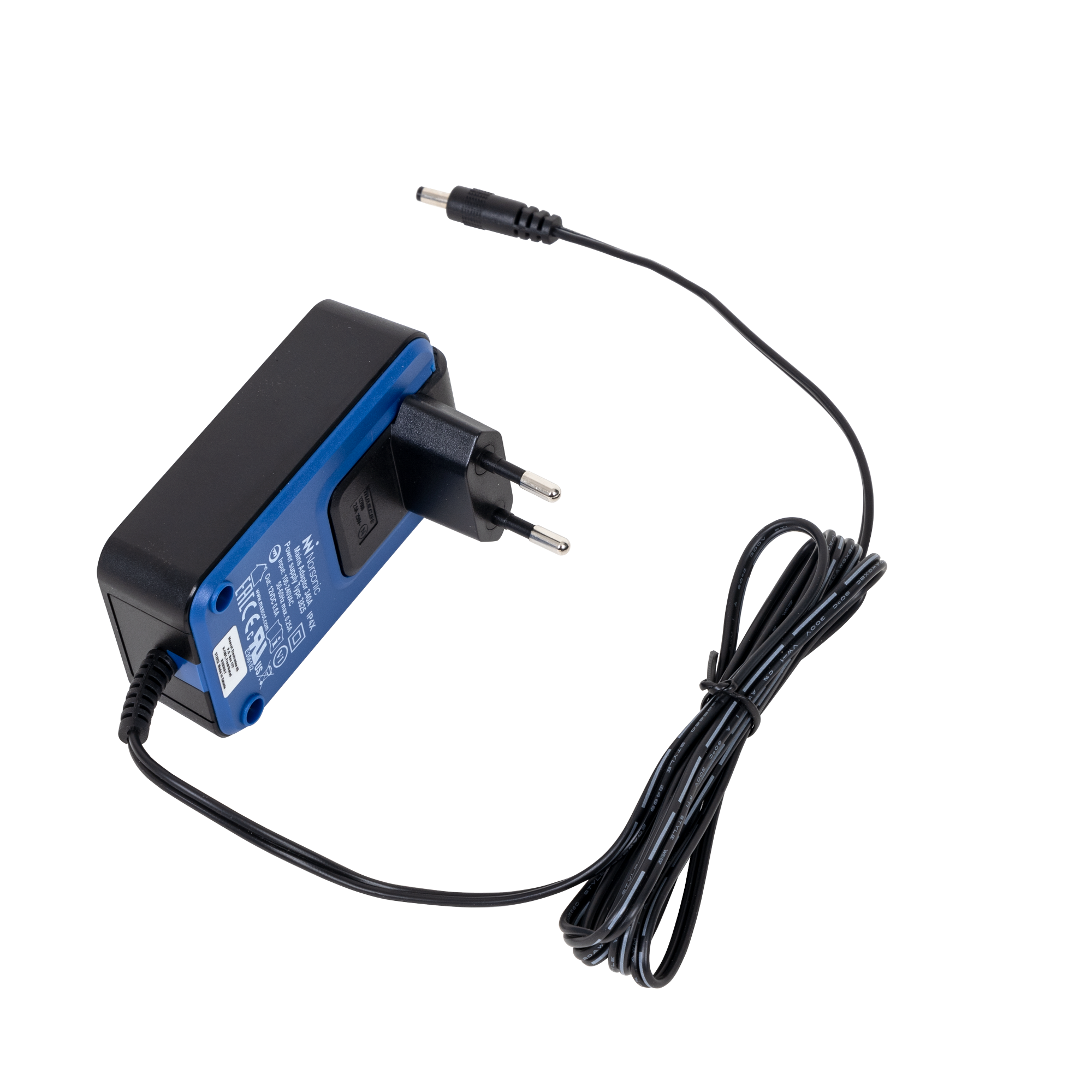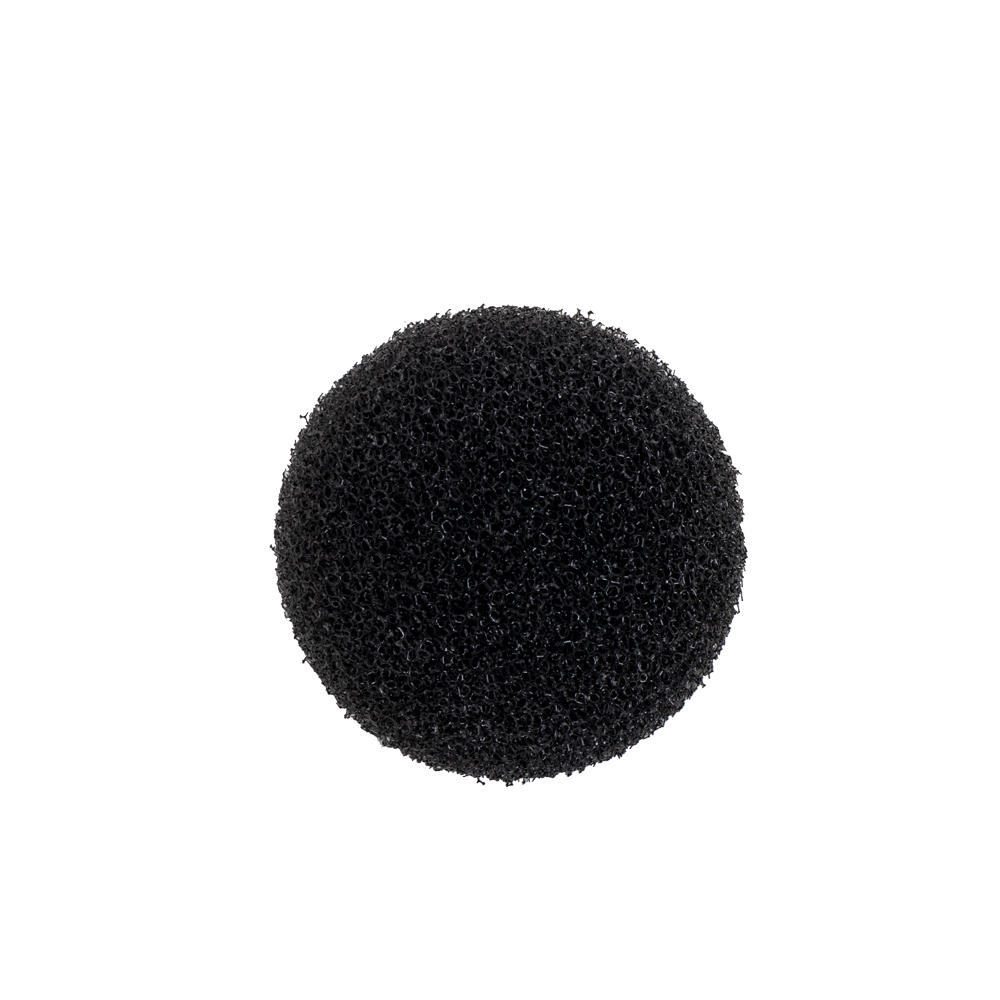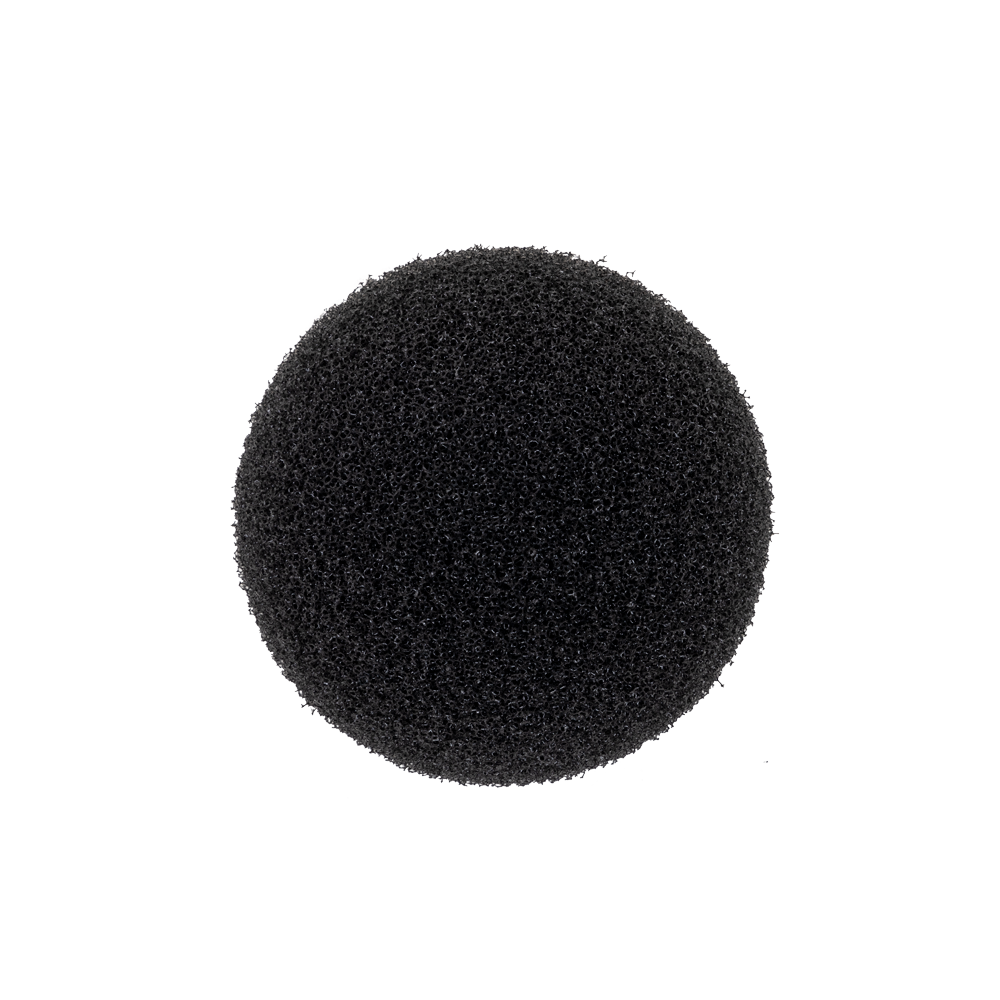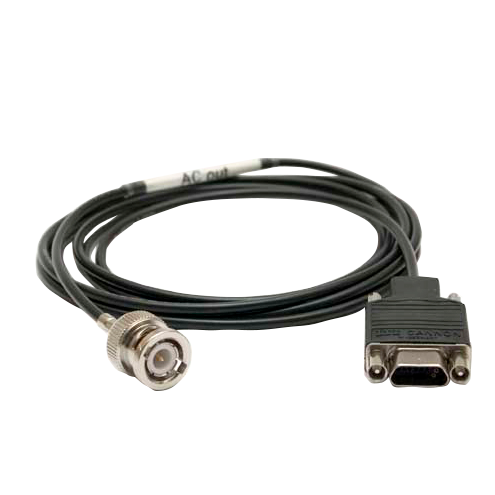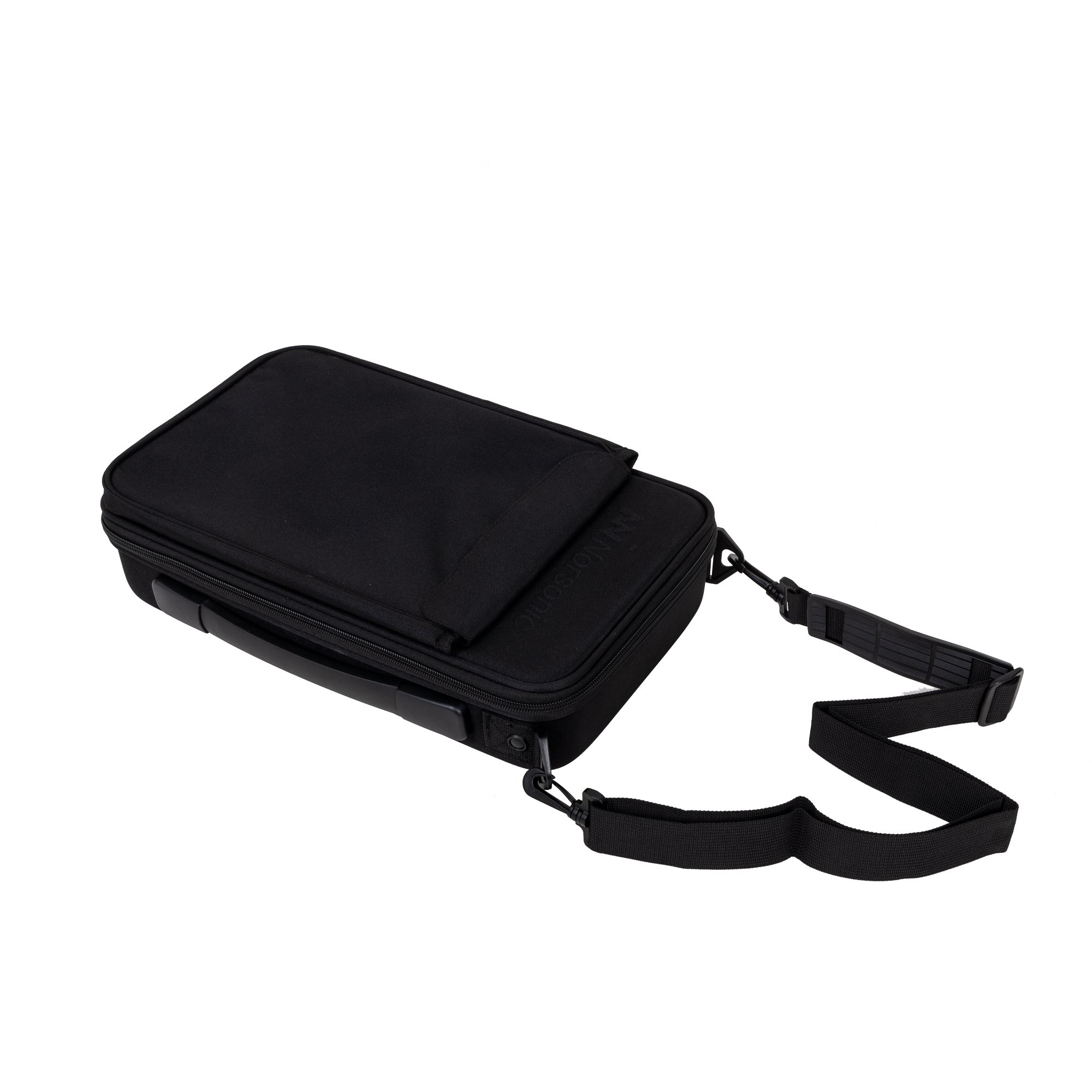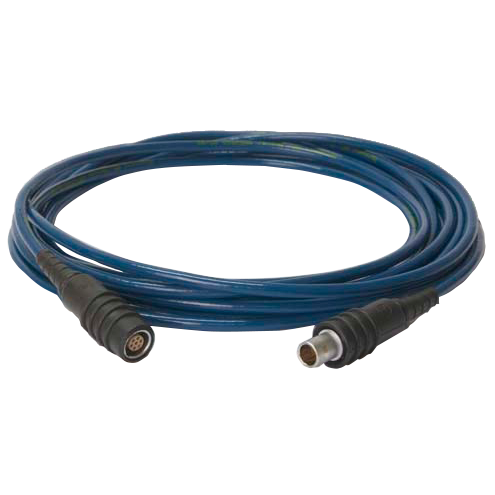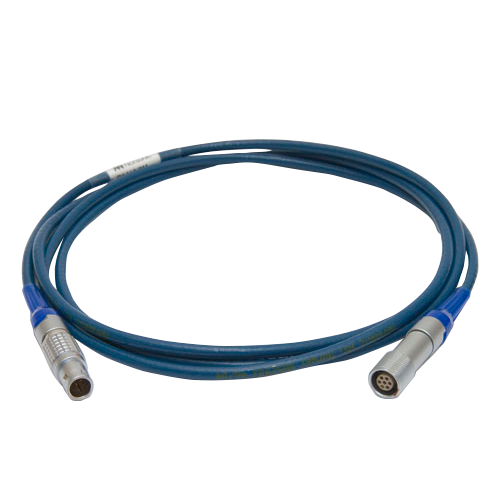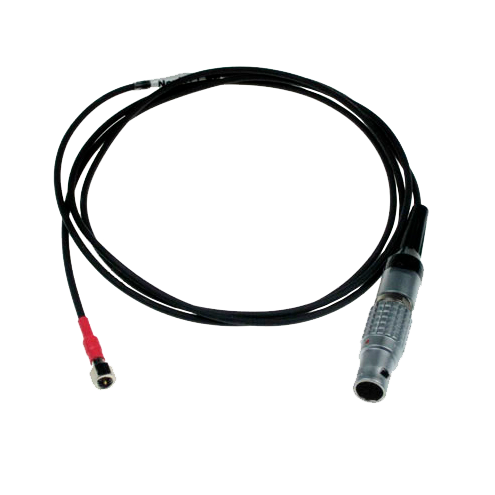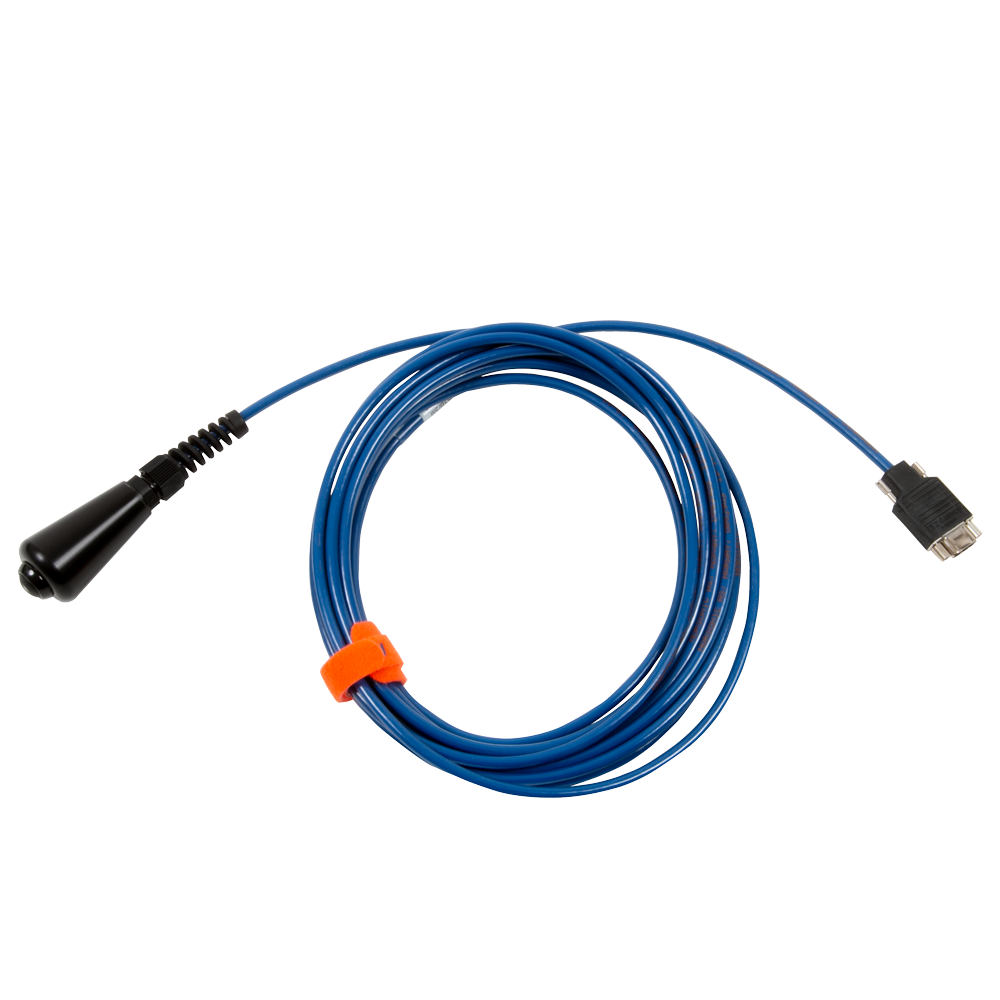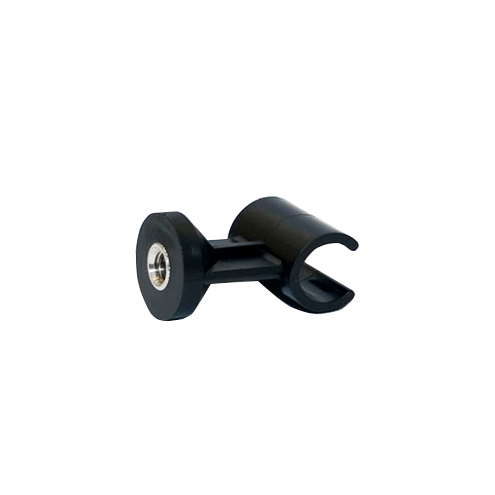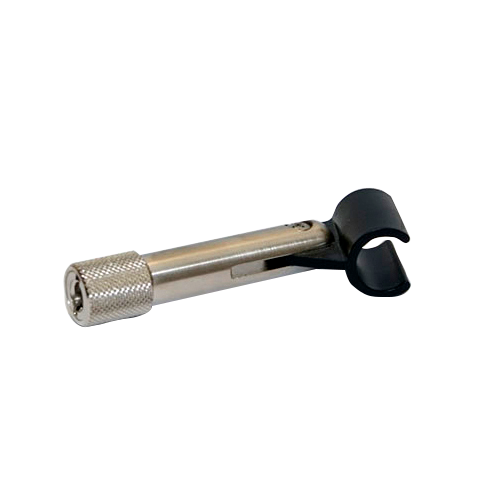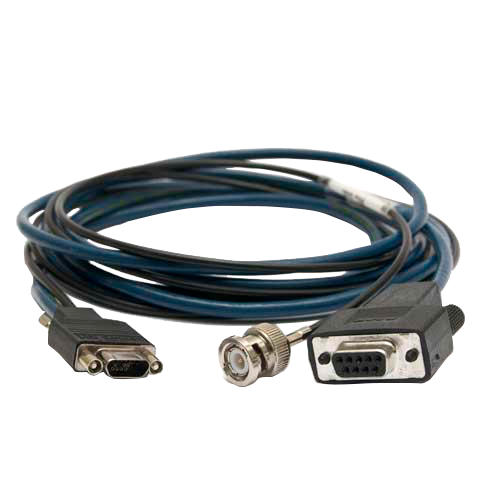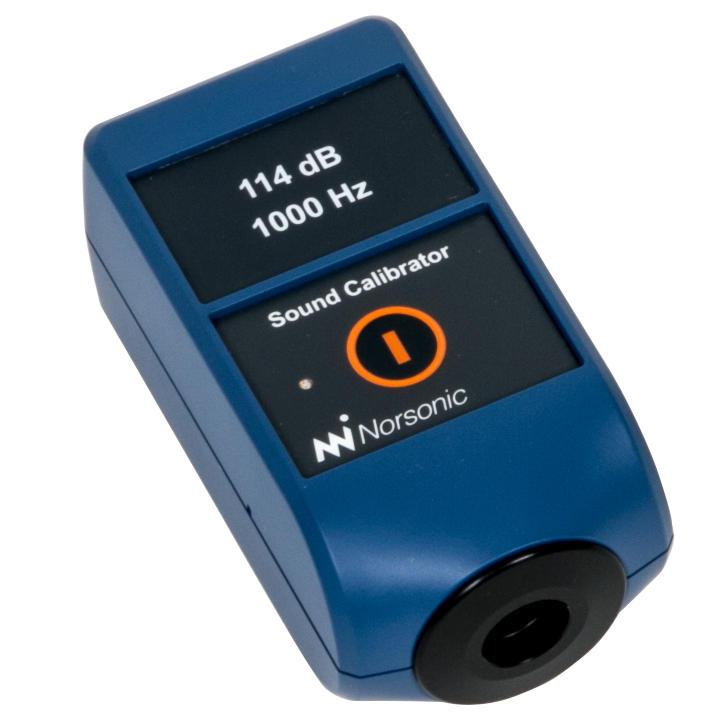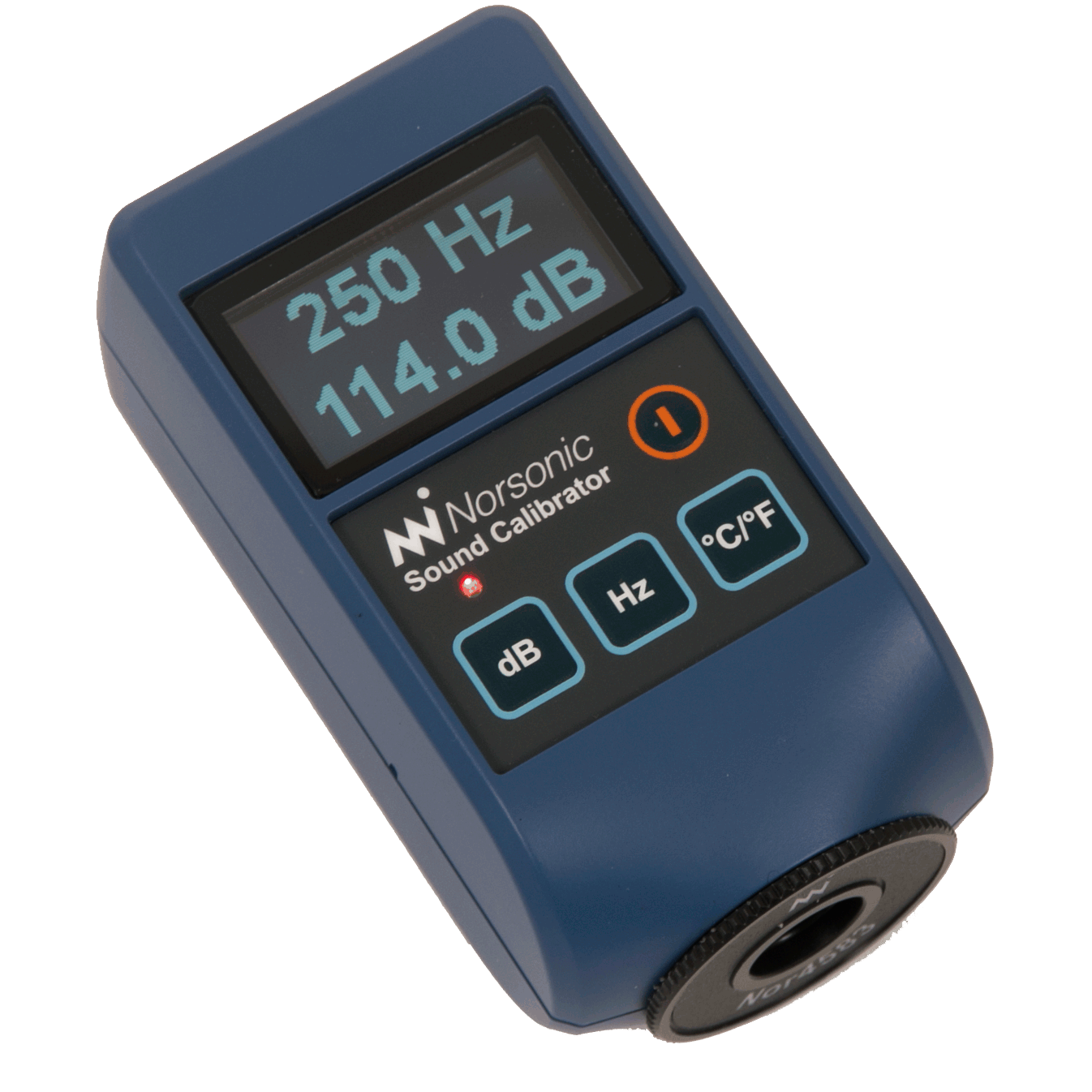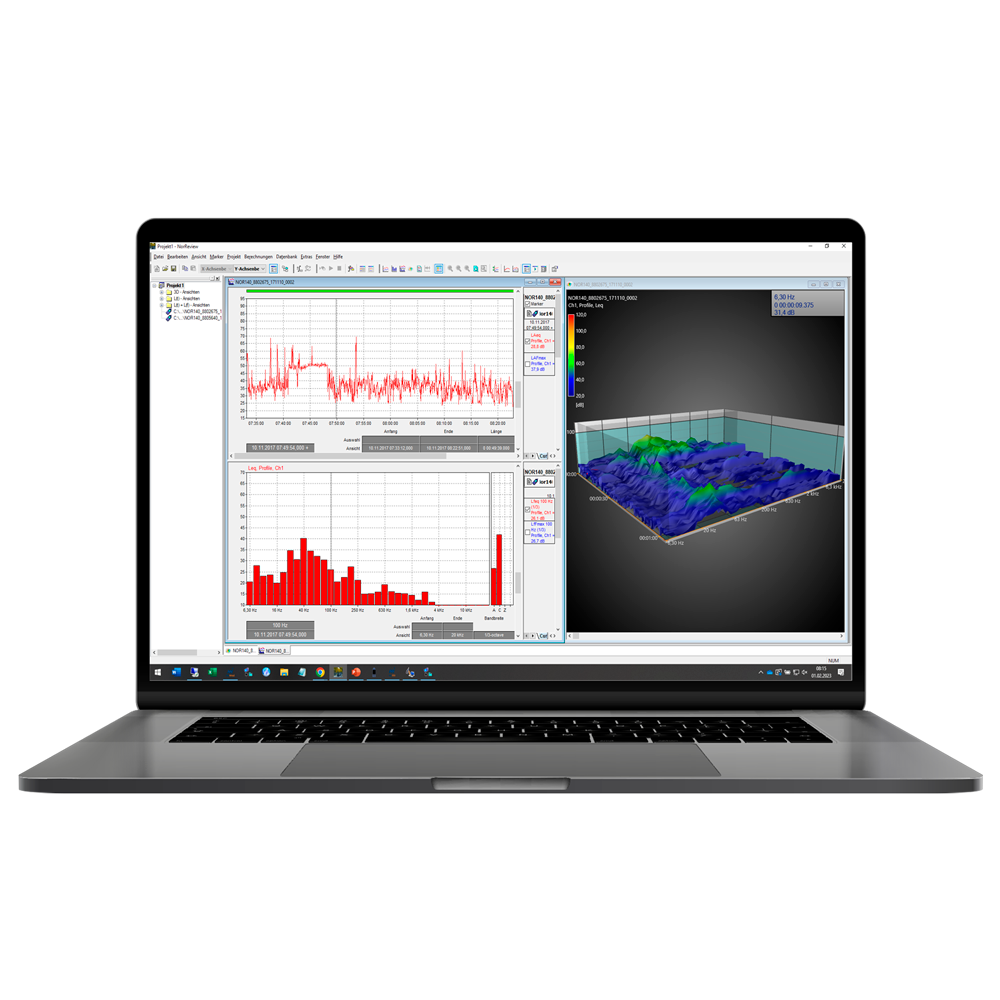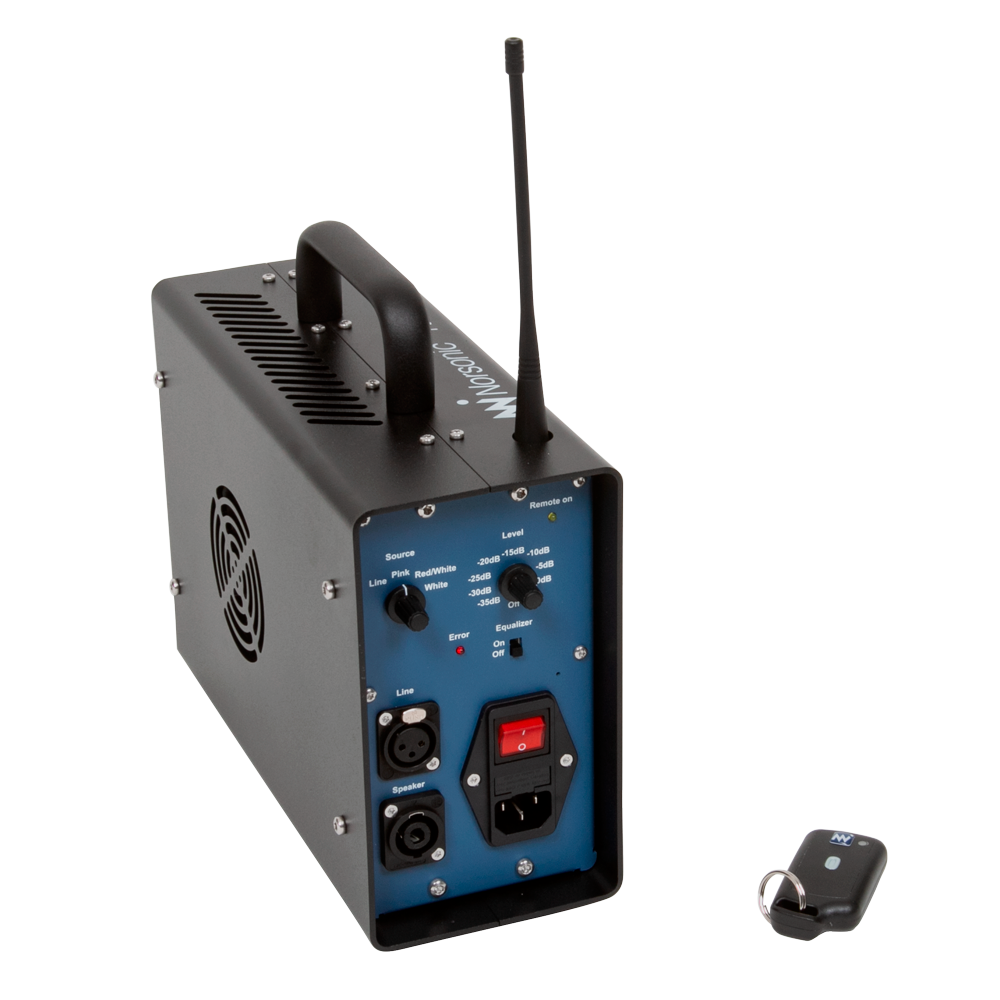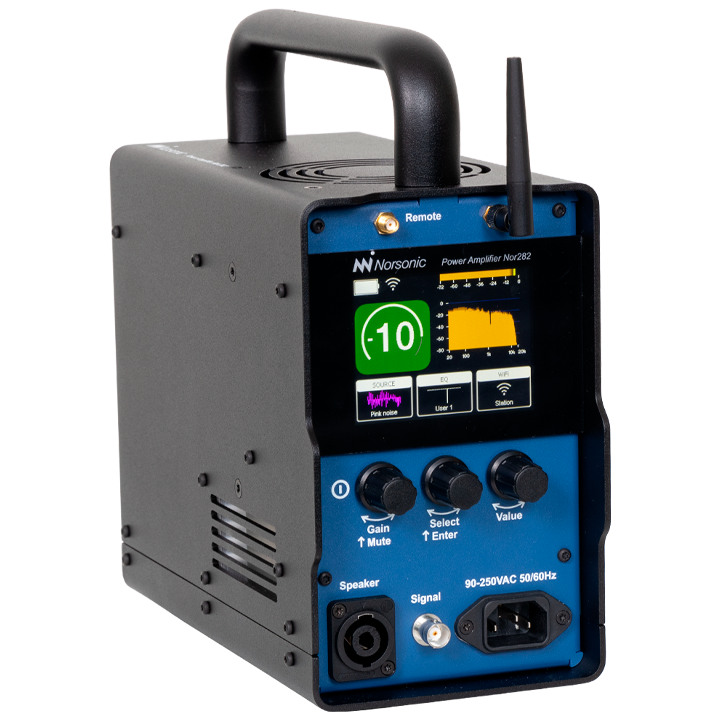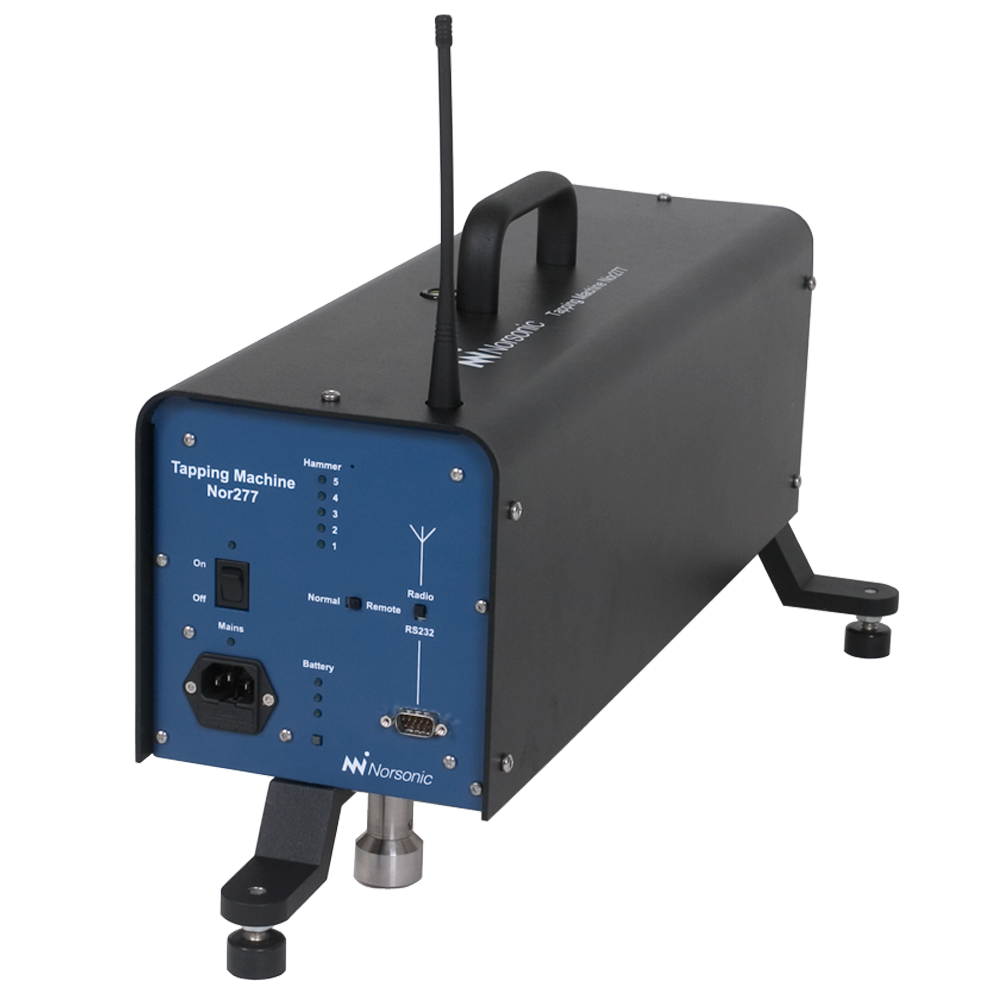Analouge inputs
Number of channels: 1
Input connector: 7 pin LEMO connector for Norsonic microphone systems.
Microphone: Nor1225, 1/2”, freefield, 50 mV/Pa.
Preamplifier: Nor1209 (Normal) or IEPE-type by menu selection.
Preamplifier supply voltage: ±15 volt, max 3 mA
Polarisation voltage: 0 V and 200 V, selectable.
Maximum input signal: ±11V peak
Preamplifier IEPE®:
Supply current: 4mA
Supply voltage: 24V
Input impedance: >100 kΩ, <650 pF
Measurement range
Measurement range: 0,3 µV – 7Vrms (10 Vpeak) in one range corresponding to -10 dB to 137 dB (140 dB peak) with a microphone sensitivity of 50mV/Pa. Option 18 shifts the measurement range to 147 dB (150 dB peak) by reducing the microphone sensitivity.
Highpass filter
The input section is equipped with an analogue highpass filter to reduce noise from wind or other sources with frequencies below the frequency range for measurements. The filter is switched on if the limited frequency range is selected (>6,3 Hz).
Filter type: 3rd order HP filter (-3 dB at 3,4 Hz, Butterworth response).
Analogue to digital conversion
The analogue input signal is converted to a digital signal by a multirange sigma-delta converter with an effective sampling frequency of 48 kHz. The anti-aliasing filter is a combination of an analogue and a digital filter.
Frequency weightings
Simultaneous measurement of A and C-weighting or A- and Z-weighting. 1/1 octave band or 1/3 octave band levels may be measured simultaneously if options providing these weightings are installed.
1/1 octave filters: 0,5 – 16000 Hz, class 1, digital IIR filters, base 10 system (IEC 61260) and ANSI S1.11- 2004 Class 1.
1/3 octave filters: 0,4 – 20000 Hz, class 1, digital IIR filters, base 10 system (IEC 61260) and ANSI S1.11- 2004 Class 1.
Level detector
Detector type: Digital true rootmean-square (RMS) detection, resolution 0.1 dB which may optionally be increased to 0.01 dB for indicated levels in the range –9.99 to 99.99 dB.
Crest factor capability: The crest factor is only limited by the peak-value of the signal.
Simultaneous measurement of the following functions: SPL, Lmax; Lmin; Leq; LE; Lpeak; LN; LeqI; LEI; LTMax5
Indication range
The calibration of the instrument allows microphones with sensitivity in the range -84 dB to +15.9 dB relative to 1V/Pa to be applied. The corresponding display range for the indicated sound level is -50 dB to +180 dB.
Self-noise levels
The self-noise is measured with the calibration set to –26.0 dB corresponding to a microphone sensitivity of 50mV/Pa. For voltage input, the level 0 dB then corresponds to 1µV. Typical values for the self-noise are 5 dB lower than the values stated. Noise measured with 18 pF microphone dummy and microphone preamplifier Nor1209, averaged over 30 s of measurement time:
A-weighted: 13 dB
C-weighted: 15 dB
Z-weighted: 25 dB
1/3 oct: 6.3 Hz to 250 Hz: 10 dB
1/3 oct: 315 Hz to 20 kHz: 5 dB
Noise measured with Nor1225 microphone and preamplifier Nor1209, averaged over 30 s of measurement time:
A-weighted: 18 dB
C-weighted: 22 dB
Z-weighted: 30 dB
1/3 oct: 6.3 Hz to 250 Hz: 15 dB
1/3 oct: 315 Hz to 20 kHz: 10 dB
Power supply
Batteries: 4 cells, IEC LR6, AA-sized
Typical battery life time: up to 8 hours
External DC: 11 – 16V. Power consumption approximately 1.2W depending on selected modes of operation. The mains adapter Nor340 is recommended for use with the instrument. If the external supply falls below 9V, the instrument will use the internal batteries if available. If the instrument switched itself off due to loss of power, it will automatically switch on and resume normal operation after reapplying the external DC supply.
Display
The display is a monochrome, transreflective LCD graphical display with 160×240 pixels (W×H) with automatic temperature compensation for contrast and viewing angle. Pressing the light key illuminates the display. The light switches off automatically
two minutes after the last operation of any key. The bargraph display covers 80dB which may be scrolled in 10dB steps to cover the total range.
Signal generator output
Max output voltage: ±10V
Output impedance: <100Ωohm. The output is short-circuit proof to GND and output current is in excess of 3 mA.
Gain accuracy at 1 kHz: ±0.2 dB
Frequency response re. 1 kHz: ±0.5 dB for 20 Hz < f< 20 kHz
AC-out: 3,5 mm stereo jack. Both channels have identical signals driven by two separate amplifiers. Load impedance shall be 16 ohm or more. Output voltage is generated by the 48 kHz DAC based on data from DSP. Full scale on the display bargraph corresponds to 100 mV.
Output impedance: Less than 10 ohm, AC-coupled 100 µF.
Gain accuracy 1 kHz: ±0,2 dB
Frequency response re. 1 kHz: ±0,5 dB for 20 Hz < f < 20 kHz.
USB interface: USB type 2.0
USB socket: B411
Serial I/O port: RS232 port, 9600 – 115200 baud.
Digital inputs: 3
Digital outputs: 4
SD Memory Card
The instrument may use SD memory card for storing of setup information, sound recordings and measurement results. SD memory card included in the delivery
Data storage
Measured data is stored in the internal memory of the sound level meter or on the SD memory card. The internal memory is of the “flash” type retaining the information without battery supply. Approximately 25 Mbyte is available for the data storage
Environmental condition for operation
Temperature: –10°C to +50°C
Humidity: 5% to 90% RH, dewpoint less than 40°C.
Atmospheric pressure: 85 kPa to 108 kPa.
Environmental condition for storage
Temperature: –30°C to +60°C
Humidity: 5% to 90% RH, dewpoint less than 40°C.
Atmospheric pressure: 50 kPa to 108 kPa.
Dimensions
Depth: 30 mm
Width: 75 mm
Weight incl. batteries: 410 g
Length, excl.microphone/preamplifier: 210 mm
Length, incl. microphone/preamplifier: 292 mm





















